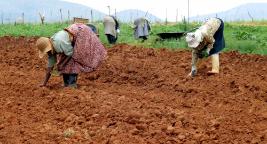
Dr Michael Rogan delivered a seminar entitled “Starving amidst Plenty: Survey Evidence on Child Stunting in South Africa” on the 13th September 2017 as part of the Labour Studies Seminar Series. The series is jointly co-ordinated by the Neil Aggett Labour Studies Unit (NALSU) and the Departments of Sociology, History, and Economics and Economic History.
Presenter
Michael Rogan is a Senior Researcher in the Neil Aggett Labour Studies Unit (NALSU) within the ISER. He is also an honorary research fellow at the HSRC’s Education and Skills Development Research Programme and a research associate in the global research-policy-action network Women in Informal Employment: Globalizing and Organizing (WIEGO). He holds a PhD and a Master’s degree in Development Studies from the University of KwaZulu-Natal (UKZN) and a Bachelor of Arts in International Studies from the University of Washington in Seattle.
Presentation Summary
South Africa is one of only a handful of countries in which the prevalence of child stunting has increased over the period during which progress towards the Millennium Development Goals (MDGs) has been monitored. One explanation for this reversal is that Big Food retail chains and food prices have been contributing to a low quality diet across the country, particularly in poor urban households. To examine this claim, this paper traces 6 years of stunting’s evolution among South African children and adolescents, with particular attention to how the prevalence of stunting differs between urban and rural areas and how the drivers of poor nutrition vary spatially. The results suggest that South Africa’s ‘food system’ does not seem to be benefiting all South Africans and poor (including the urban working poor) households continue to be exposed to a low quality diet.
The presentation was based on the ISER Working Paper 2017.02
http://www.ru.ac.za/media/rhodesuniversity/content/iser/documents/Working%20paper-2017-2.pdf
